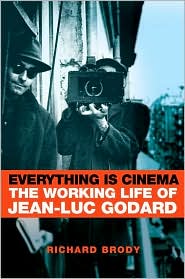 A New Historicist of the film avant-garde, Ken Jacobs isn't interested in simply deconstructing his text, but in situating it within its historical and material circumstances and using those circumstances to comment on the text's relationship to both the ideological conditions surrounding its creation and to their present day counterparts. In his latest work, Razzle Dazzle, Jacobs spins obsessive digital variations on a 1903 Edison short of the same name - depicting a circular fairground amusement ride - breaking down the image into every imaginable configuration - blow-ups, slow-mos, digital tomfoolery - until the image is rendered a near-complete abstraction - and flooding the screen with a oozing, unnatural red, as if scorching the film with acid or setting it afire.
A New Historicist of the film avant-garde, Ken Jacobs isn't interested in simply deconstructing his text, but in situating it within its historical and material circumstances and using those circumstances to comment on the text's relationship to both the ideological conditions surrounding its creation and to their present day counterparts. In his latest work, Razzle Dazzle, Jacobs spins obsessive digital variations on a 1903 Edison short of the same name - depicting a circular fairground amusement ride - breaking down the image into every imaginable configuration - blow-ups, slow-mos, digital tomfoolery - until the image is rendered a near-complete abstraction - and flooding the screen with a oozing, unnatural red, as if scorching the film with acid or setting it afire.But just as this strategy of obsessive deconstruction seems to exhaust the film's possibilities and threatens to reduce the project to complete meaninglessness, Jacobs cuts away to a series of situating near-contemporary texts - a set of stereoptican slides from the time period just before the advent of cinema - which he digitally manipulates so that they take on the third dimension generally denied to projected images. Continuing his exploration of a signature concern - the relationship between the perception of rounded reality and its necessarily flattened depiction when filtered into photographic image - the filmmaker sets these intertextual intrusions in surprising counterpoint to the Edison film which never registers as anything more than a series of splotches on a screen. If Jacobs strips the Edison of its myth-making illusion, then he illustrates how through the advent of digital technologies, a flat image can be made to move in the opposite direction, taking on the highly artificial (and highly potent) existence of a false reality, the primitive mode of representation transformed into Bazinian verisimilitude, actualité become actuality.
Signaling the film's final turn into explicitly political territory, Jacobs introduces a last set of intertextual elements, starting with a voice recording spoken by Edison himself extolling the virtues of imperialist expansion, a cause that had recently found its ideal expression in the Hearst-sponsored Spanish-American War. From here, a fresh set of contemporary films, depicting the war and its aftermath - a soldier leaving his wife to fulfill his patriotic duty only to return home wounded but full of honor, several battlefield pieces - appear and make explicit the links between the sort of jingoistic attitudes that allow for the perpetuation of such wars and the conditions surrounding the creation of Edison's fairground film. Created under the auspices of a pro-imperialist patriotism, Razzle Dazzle shows the domestic flipside of the coin: the mindless leisure that Americans are free to enjoy at home and the attitude of effortless entitlement that constitutes the tainted legacy with which the United States hoped to stamp the rest of the world. Any resemblance to the country's current international situation is, needless to say, wholly intentional.






